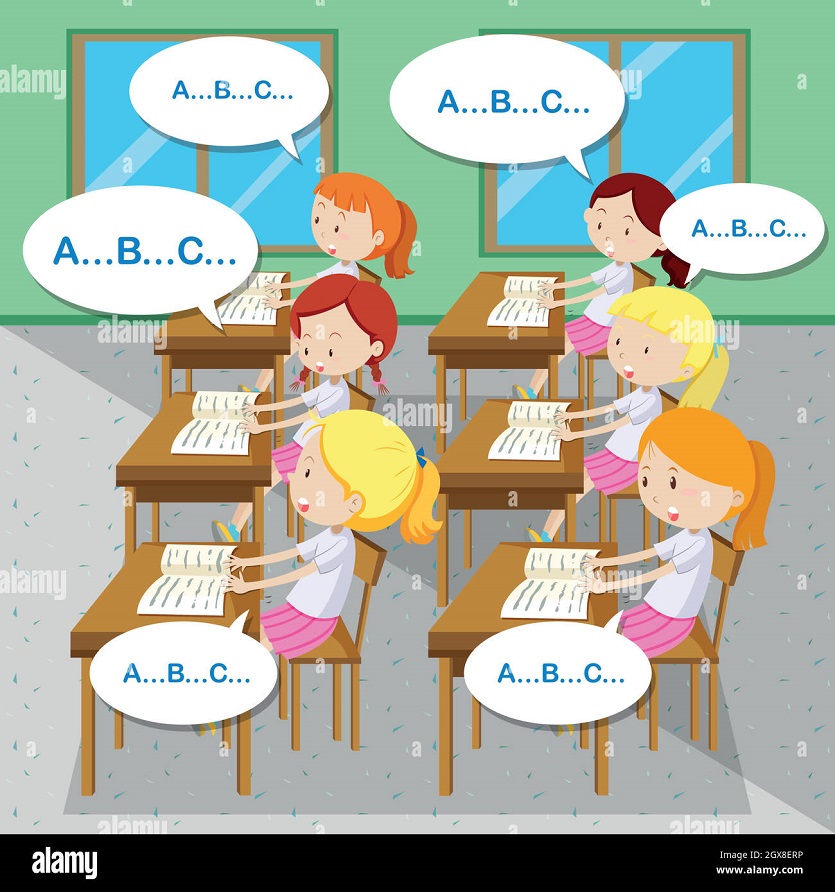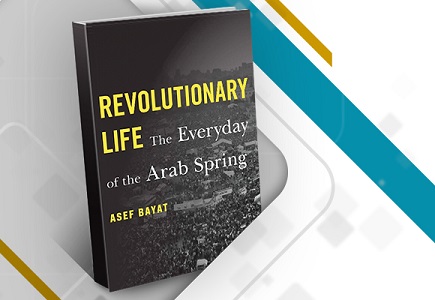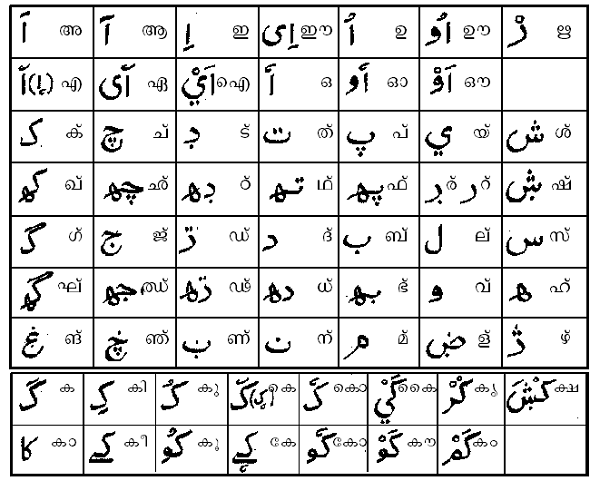
As a consequence of the rapid development in science, technology and media, second language teaching field has undergone drastic changes in the recent years, changing the functional component of language classes too. Technological equipments of various kinds can be appropriated so as to make the ELT class rooms livelier and students friendly provided the stakeholders are competent enough to use them creatively. As ELT classrooms give more attention to the acquisition of language in the learners, it is highly significant to give proper focus on developing the vocabulary of the learners. Vocabulary, the core of the language, is not acquired at one shot; rather, it necessitates a long process. Throughout the process learners have to be familiarized with the encountered words. What makes them familiar with the words for acquisition is the frequency of their usage and number of chances they get in different forms and contexts. The traditional method of encouraging rote learning of words is no longer valid in the present context where teacher is not the sole source of knowledge, rather a facilitator of teaching-learning process. Students have to be given more chances to acquire required amount of vocabulary at the primary levels itself so as to make them competent enough in communication with the right choice of words at later stages of teaching-learning process. As learners of primary classrooms are more interested in visual assisted learning, teachers have to adopt multiple strategies to impart vocabulary. In the case of learners at primary levels, we can see that they are more interested in watching cartoon channels and programmes through visual media. If the teachers channelize their interest in these programmes by selecting and using the appropriate kind of cartoons to build vocabulary, the teaching-learning environment will definitely turn into more interesting and effective. Through this paper I would like to explore the possibilities of cartoon in vocabulary building at primary levels.
The ever growing need for good communication skills in English has created a huge demand for English teaching around the world. The world wide demand for English has created an enormous demand for quality language teaching and language teaching materials and resources. It is imperative upon the learners to master English with fluency and accuracy so as to become successful communicators. The demand for an appropriate teaching methodology and teaching learning environment is therefore as strong as ever.
Traditional approaches gave priority to grammatical competence as the basis of language proficiency. They were based on the belief that grammar could be learned through direct instructional methodology that made much use of repetitive practice and drilling. It was assumed that language learning meant building up a large repertoire of sentences and grammatical patterns and learn to produce these accurately and quickly in the appropriate situations. Techniques that were often employed include memorization of dialogues, question and answer practice, substitution drills and various forms of guided speaking and writing practices. Methodologies based on these assumptions include audio-lingualism, or aural-oral method and structural situational approach or situational language teaching. This shift was influenced by linguists such as Dell Hymes, who proposed that language proficiency should be measured by the ability to use language appropriately in various social contexts, rather than just knowing grammar rules.
A reaction to the traditional language teaching methodology has begun to surface in the 1970s and as a result, the emphasis shifted from grammatical competence to communicative competence. This new approach in the domain of language teaching has persuaded the language teachers all over the world to rethink about their teaching methods and the role of the teachers in the teaching-learning environment. Since 1990s, the Communicative Language teaching(CLT) has become quite popular and CLT theory and practice has brought out paradigm shifts in teaching-learning environment of language teaching. CLT in the present context refers to a set of generally agreed principles that can be applied in different ways, depending on the teaching-learning context, the age of the learners, individual ability and so on. Jacobs and Farell see the shift toward CLT as marking a paradigm shift in our thinking about teachers, learning and teaching. They identify key components this shift such as teacher- centered to learner-centered, product oriented to process oriented instruction, and contextual learning(qtd. in Richards 28-29). CLT encourages interaction, negotiation of meaning, and authentic communication tasks in the classroom, promoting language learning as a dynamic and interactive process.
As ELT classrooms give more attention to the acquisition of language in the learners, it is highly significant to give proper focus on developing the vocabulary of the learners. Vocabulary, the core of the language, is not acquired at one shot; rather, it necessitates a long process. Throughout the process learners have to be familiarized with the encountered words. What makes them familiar with the words for acquisition is the frequency of their usage and number of chances they get in different forms and contexts. The traditional method of encouraging rote learning of words is no longer valid in the present context where teacher is not the sole source of knowledge, rather a facilitator of teaching-learning process. Students have to be given more chances to acquire required amount of vocabulary at the primary levels itself so as to make them competent enough in communication with the right choice of words at later stages of teaching-learning process. As learners of primary classrooms are more interested in visual assisted learning, teachers have to adopt multiple strategies to impart vocabulary. Though new strategies are efficiently adopted in higher education scenario, it is a fact that very little developments are actually implemented at the primary level. Research shows that vocabulary knowledge correlates strongly with overall language proficiency, as vocabulary forms the foundation for speaking, listening, reading, and writing skills.
It is a fact that children are always curious to learn and observe things that happen around and at the same time they are quite restless too. The basic instinct of any child is to play around and seek pleasure. Consequently it is highly difficult to grab the attention of the children for a long period of time for the teaching-learning purpose. Cartoon channels, being such a lively media, have always been appealing to children. Their constant companions are the characters and figures they meet in the cartoon programmes. So it is high time for the teachers to adopt themselves to the world of these ‘smart’ kids. Cartoon Network started operating in India in 1995 as a dual channel; CN and Turner Classic Movies. By 2001, CN India has turned into a 24 hours channel. Disney India started operation in 2004 and other popular cartoon channels include POGO, Chutti TV and Hungama TV etc. It is quite surprising to see that these cartoons, though often criticized from many angles, play a major role in developing the cognitive skill of the learners and vocabulary. If the teachers channelize their interest in these programmes by selecting and using the appropriate kind of cartoons to build vocabulary, the teaching-learning environment will definitely turn into more interesting and effective. Jean Piaget, the Swiss developmental psychologist, has pointed out that the child has the innate ability to perceive things on its own and that the adults should back off themselves by providing room for the child to grow. It is clear that the tremendous abilities that vested in the children or learners can be effectively appropriated for the language learning and vocabulary buildingwith the assistance of cartoon programmes or visual media in the CLT class rooms where the teacher acts as a facilitator. Cartoons offer a multisensory learning experience, combining visuals, sounds, and context, which can aid in vocabulary retention and comprehension.
The slow pace of speech, simple and complete sentences used in cartoons encourage children to learn new words by associating pictures and sounds. The following features of cartoon programmes also reiterate the significance of using them in the teaching learning environment:
Word Association: Choose cartoons with characters and scenes that introduce new vocabulary related to everyday objects, actions, and emotions. After watching the cartoon, engage learners in discussions about the meanings of new words, their usage in sentences, and associations with familiar concepts.
Contextual Learning: Select cartoons that depict common situations or scenarios relevant to learners' lives, such as family interactions, school activities, or community events. Pause the cartoon at key moments to discuss the context and meaning of words used in the dialogue or narration.
Theme-Based Vocabulary: Plan vocabulary lessons around specific themes or topics explored in cartoons, such as animals, nature, transportation, or occupations. Introduce vocabulary related to the theme before watching the cartoon and encourage learners to identify and use new words while watching.
Idiomatic Expressions: Choose cartoons that feature characters using idiomatic expressions or colloquial language. Pause the cartoon to explain the meaning and usage of idioms, providing examples and encouraging learners to practice using them in context.
Word Games and Activities: Create interactive activities based on cartoon clips, such as word matching games, vocabulary quizzes, or role-playing exercises. Encourage learners to act out scenes from the cartoon using newly acquired vocabulary and expressions.
Repeated Exposure: Incorporate cartoons into regular lessons to provide learners with repeated exposure to target vocabulary. Use clips from the same cartoon across multiple lessons to reinforce learning and deepen understanding of key words and phrases.
Interactive Worksheets: Develop worksheets or handouts that accompany cartoon viewing sessions, featuring vocabulary exercises, word searches, or fill-in-the-blank activities based on the dialogue and visuals in the cartoon.
Creative Writing Prompts: After watching a cartoon, prompt learners to write short stories, dialogues, or journal entries using the vocabulary and themes introduced in the cartoon. Encourage creativity and imagination while reinforcing language skills.
Advance in science and technology has not only changed the attitude of the teachers and learners but also the class room ambience too. The traditional concept of teacher as the only source of knowledge is no longer valid and the teacher has to play the role of facilitator in today’s class rooms. It is highly incumbent upon the teachers to make use of resources like cartoons in the ELT class rooms to turn the learning process more lively and interesting. The teachers can choose appropriate cartoons on a variety of topics to strengthen the vocabulary depending on the time and type of learners. The teachers can demonstrate vocabulary and illustrate idioms and expressions in the class rooms by selecting and screening concerned parts of the programmes. Different dialogues of the cartoons can help the children to learn new words and expressions without much effort from the teachers. Cartoon programmes of different types could be a better aid in the ELT class rooms provided the stakeholders; teachers, and learners alike, are competent enough to channelize and explore the advantages of the same. Teachers play a crucial role in selecting appropriate cartoons, designing related activities, and guiding learners in language exploration and analysis during and after viewing sessions.
So the integration of visual media, particularly cartoons, into English language teaching aligns with the principles of communicative language teaching and provides a stimulating and effective means of vocabulary acquisition for learners at different proficiency levels.
Bibliography
Jacobs, George M., and Thomas S. C. Farrell. "Understanding and Implementing the CLT (Communicative Language Teaching) Paradigm." RELC Journal, vol. 32, no. 2, 2001, pp. 5–30
.Kang, Hye Sun, and Seong Yeon Han. "The Effects of Using Cartoons on Vocabulary Learning for Young Children." English Language Teaching, vol. 6, no. 4, 2013, pp. 104-114.
Larsen-Freeman, Diane, and Marti Anderson. Techniques and Principles in Language Teaching. Oxford University Press, 2011.
Oxford, Rebecca L. Language Learning Strategies: What Every Teacher Should Know. Heinle & Heinle, 1990.
Piaget, Jean. The Origins of Intelligence in Children. International Universities Press, 1963.
Price, Marilyn. "Mistakes Improve Children’s Learning." Psychology Today, 07 Sep. 2011, www.psychologytoday.com/us/blog/the-price-research/201109/mistakes-improve-childrens-learning. Accessed 05 Feb. 2016.
Richards, Jack C., and Theodore S. Rodgers. Approaches and Methods in Language Teaching. Cambridge University Press, 2014.
Swan, Michael, and Catherine Walter. Cambridge English Course 1. Cambridge University Press, 1984.
Williams, David, and Martina Zenger. "Teaching Vocabulary through Cartoons: A Multisensory Approach." TESOL Journal, vol. 7, no. 1, 2016, pp. 137-147.




